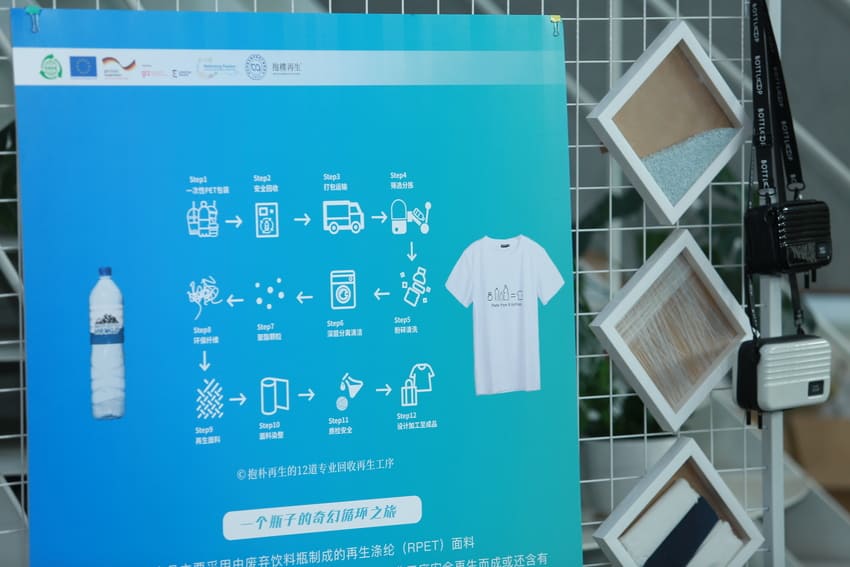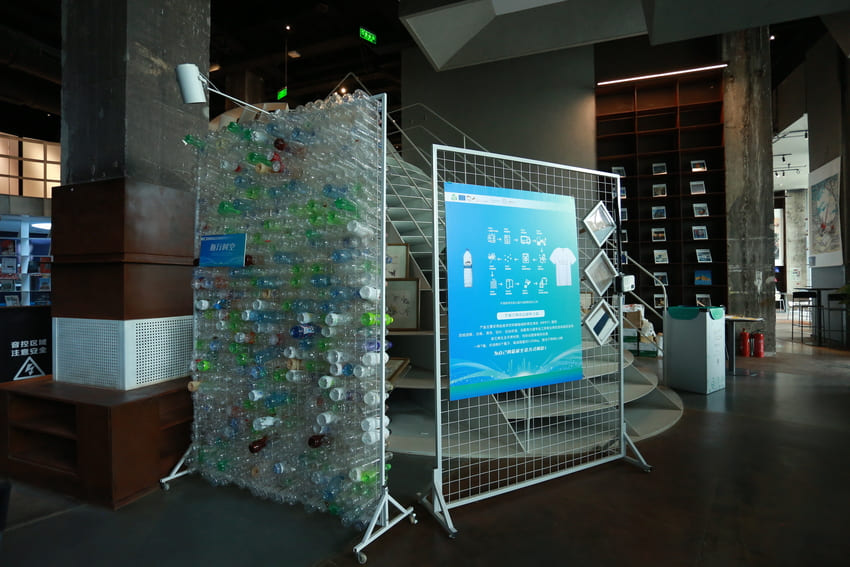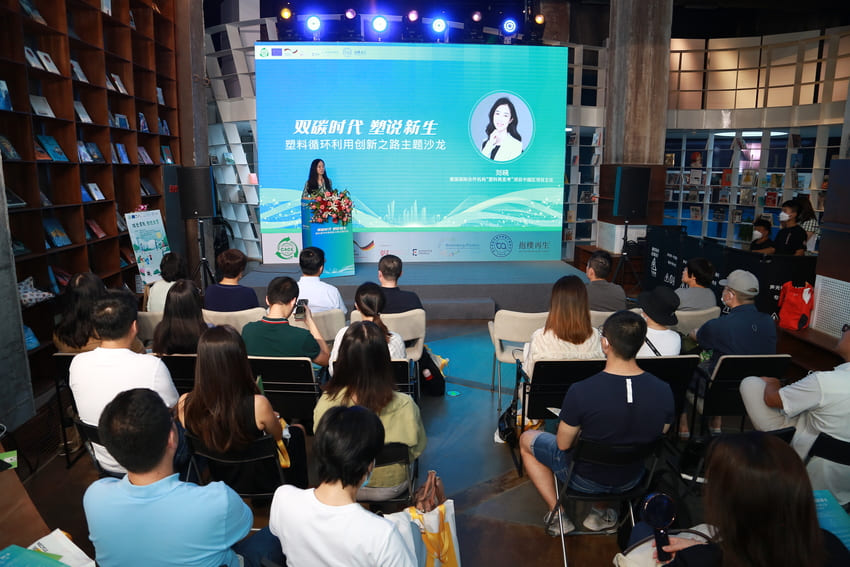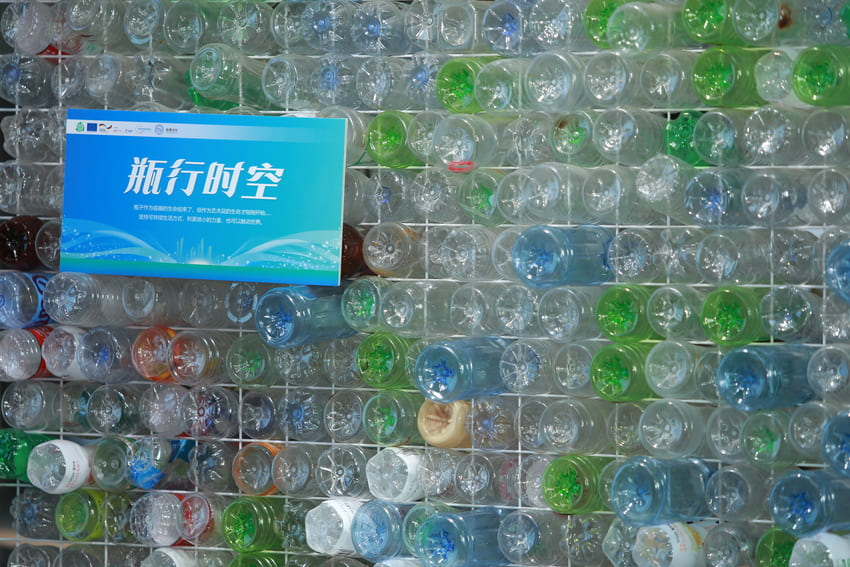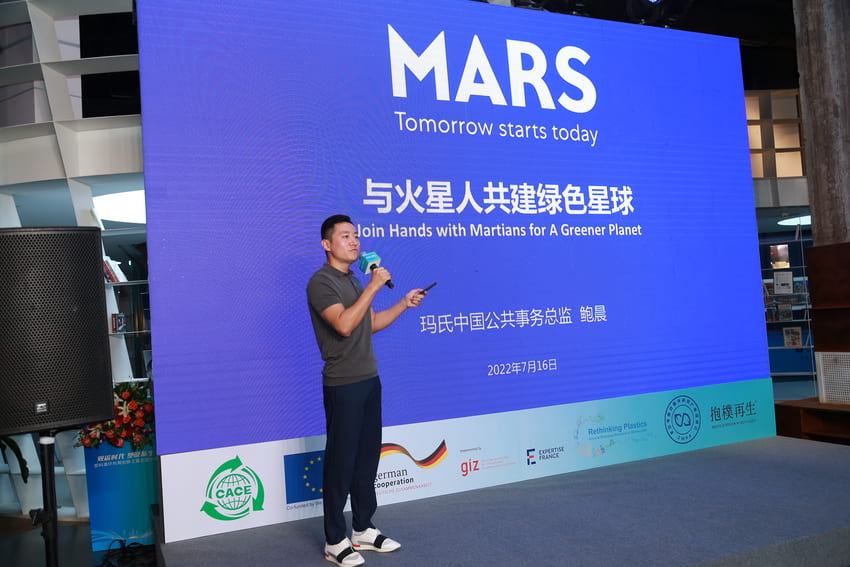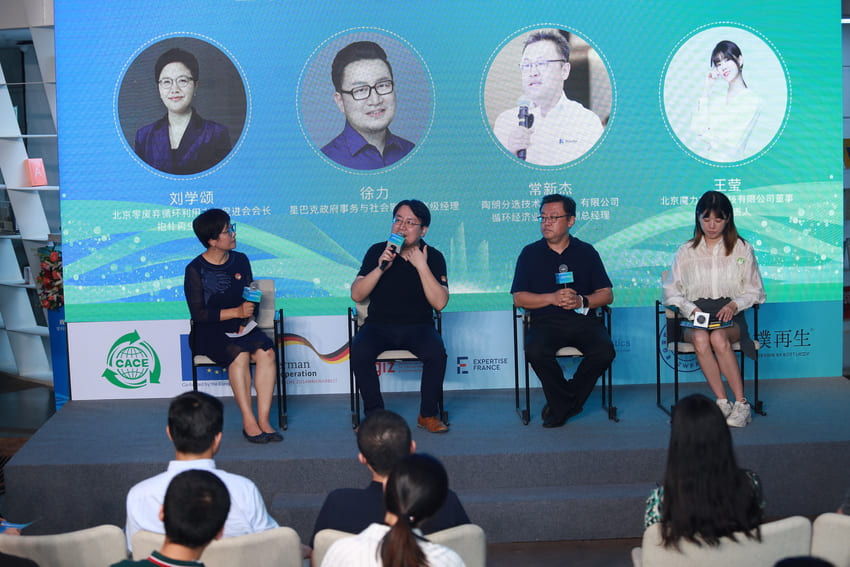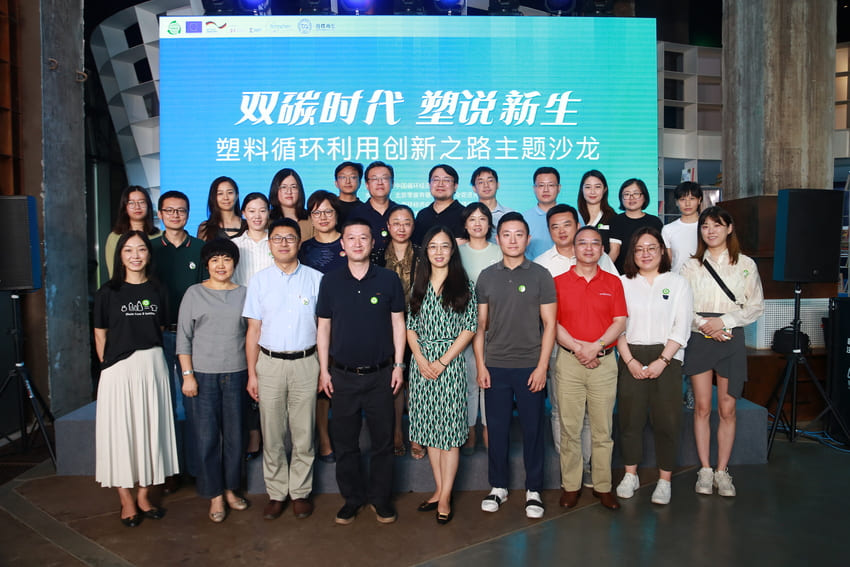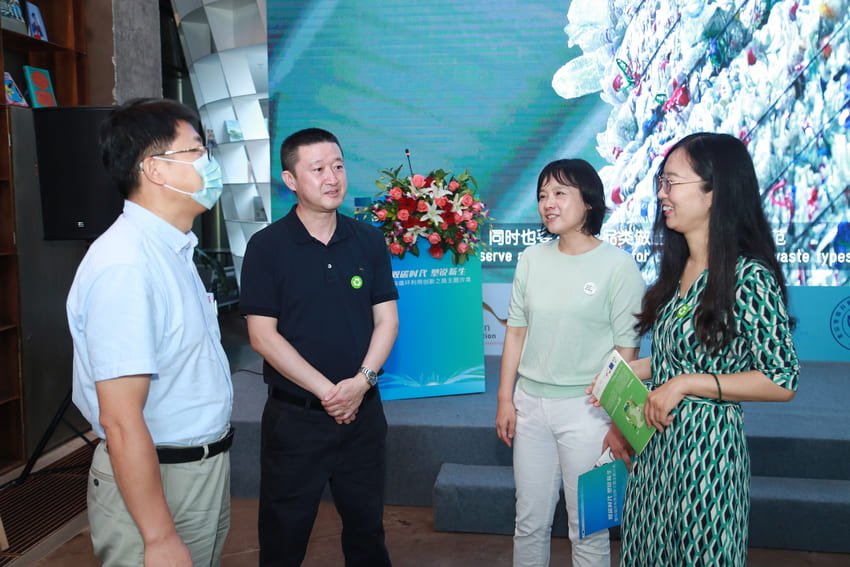A Better Collection of Drinking Bottles
A quick coffee in a take-away cup from a café in the morning, water in a plastic bottle throughout the day and an energy drink in an aluminium can in the evening – our “on the go” lifestyle often means that we no longer drink exclusively from our cups and glasses at home.
Video on the pilot
This has its advantages, but also results in a huge amount of rubbish: cups, bottles and cans are usually emptied quickly and thrown away into the nearest bin. But what happens with them then? How can we improve the collection and recycling of these containers? In this pilot project, we tested practical solutions in Xiamen, a city with more than five million inhabitants. Together with research institutes, local organisations and companies across the supply chain, we introduced a Deposit Return Scheme for single-use beverage packaging. This recycling mechanism is based on the principle that consumers are charged a deposit for beverage packaging, which they receive back after correct disposal of the bottle, carton or can.
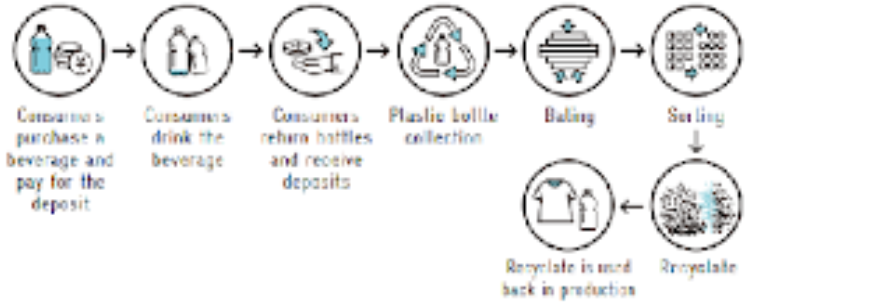
WHAT HAVE WE ACHIEVED IN 18 MONTHS?
1. Studies for a sound foundation
During the project, we conducted two studies: one analysed where beverage packaging ends up in Xiamen after use, and a second explored the feasibility of a Deposit Return Scheme for single-use drinking bottles.
For the first study, we looked at all types of single-use beverage packaging waste – from plastic and glass bottles, to metal cans and paper-based packaging, such as cartons – and how it is processed. The recycling rate for this so-called ‘high-value’ rubbish was as high as 83% due to a successful mechanism of rubbish collection. The picture was different for low-value packaging waste, such as takeaway containers, paper cups and plastic cups. These were only recycled at a rate of 11% due to the current recycling system.
The second study targeted consumers. In an online survey, we asked people what they knew about Deposit Return Schemes for single-use drinking bottles and if they would favour such a system. Most people stated that they would be interested in the scheme, but needed more information. This shows that establishing a Deposit Return Scheme is feasible, but needs explanation.
2. Deposit Return Scheme in Xiamen
Based on our studies, we recommended the introduction of a Deposit Return Scheme to the local authorities in Xiamen. The scheme for a better collection and recycling of plastic bottles works as follows: the consumer buys a beverage in a plastic bottle and is charged a deposit for the packaging. After finishing the drink, the consumer returns the bottle to a collection point, where the deposit is refunded. The bottles are stored until the operator arranges transportation.
Unfortunately, it is more difficult to mobilise enterprises to recycle low-value packaging waste due to its high cost and low profit. Therefore, the efficiency of collecting and transporting low-value packaging waste needs to be improved and emphasised.
“Through the experience in Xiamen, we hope to explore a new mechanism for plastic bottle collection based on the situation in China, which will contribute to the improvement of the overall recycling rate, plastic pollution control and the achievement of the national carbon neutrality strategy.”
ZHAO Kai, Executive Vice President, China Association of Circular Economy
3. Exhibition: “The recycling journey of a bottle”
To share more information, an exhibition presented “the recycling journey of a bottle” to the public in Xiamen towards the end of the project. The exhibition promoted plastic recycling as an important way to prevent and control plastic pollution.
Online, the public could engage in a campaign called “14 days of plastic reduction lifestyle”. Through an app, consumers could follow recommendations to cut out disposable plastic products, for example through waiving food delivery or using reusable bags for shopping. When sticking to the sustainable actions for at least one week, the consumer received little presents, such as bags or decorations made from recycled plastics.
WHAT ARE OUR RECOMMENDATIONS FOR THE FUTURE?
- It is vital to strengthen the cooperation between government, enterprises and the public. It needs communication and collaboration between all actors along the beverage supply chain, such as manufacturers, waste collectors and recyclers. The responsibilities of all actors should be made visible on packaging.
- In China, the collection and recycling of low-value packaging waste should be emphasised rather than the high value ones. Guidance and government support is needed to integrate market- and government-oriented recycling.
- Fiscal, tax and financial support policies can encourage recycling of beverage packaging waste and support recyclable resource enterprises with independent funding channels.
- On the national level, the Deposit Return Scheme (DRS) and Extended Producer Responsibility (EPR) needs to be discussed and evaluated.
Implemented by: China Association of Circular Economy (CACE)
Documents

